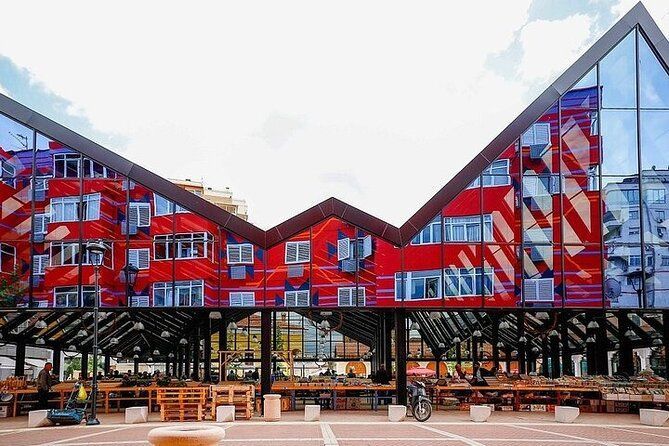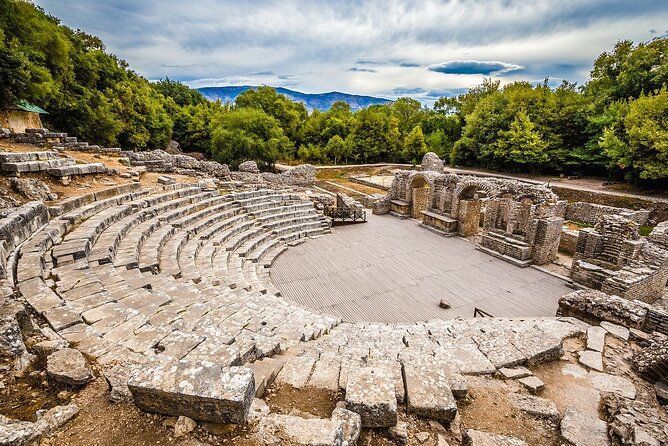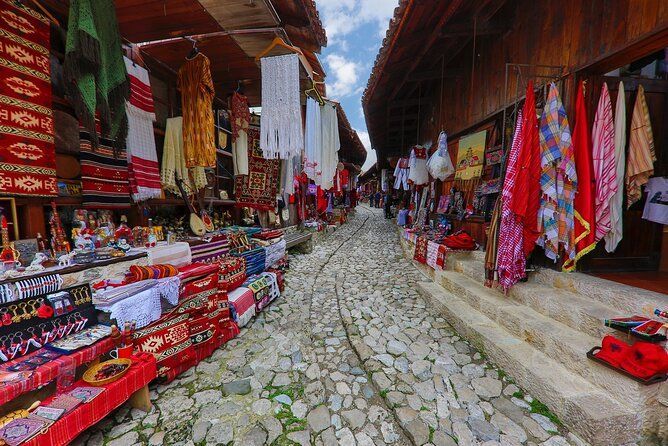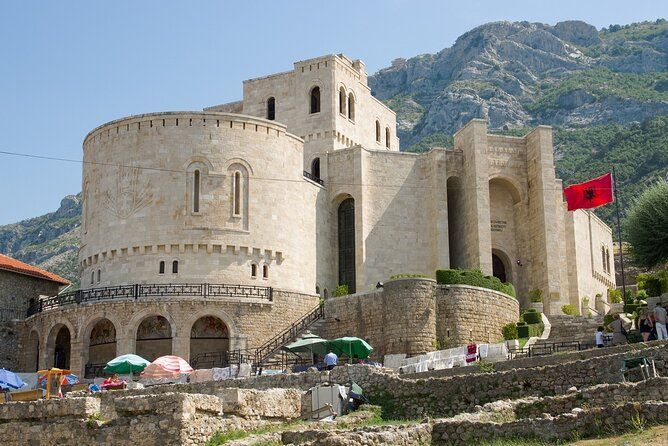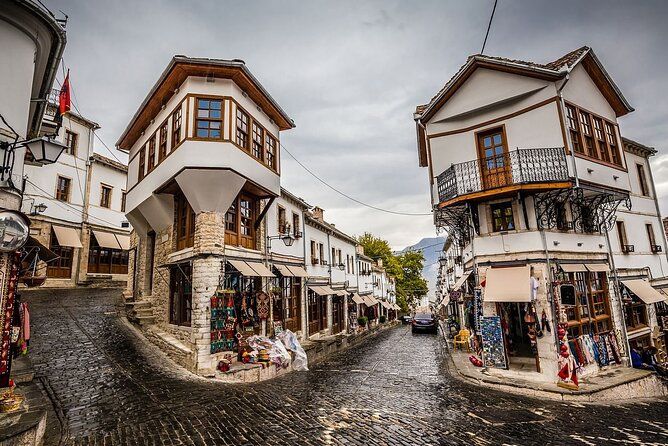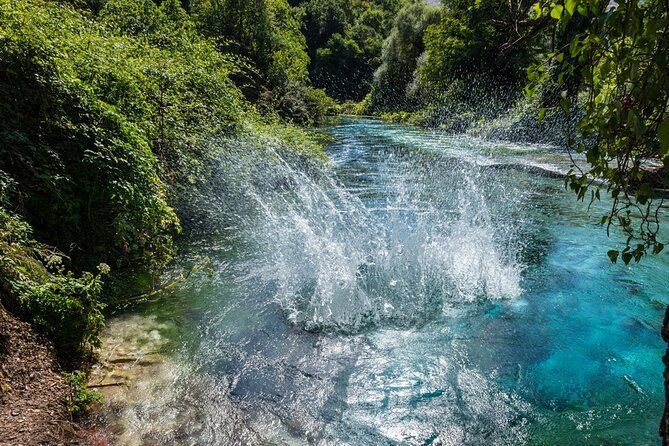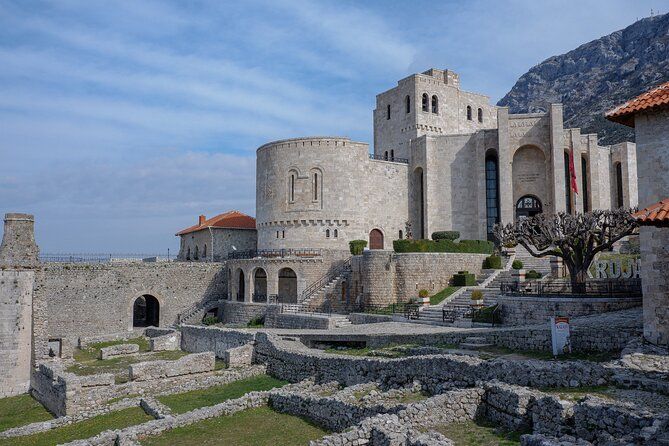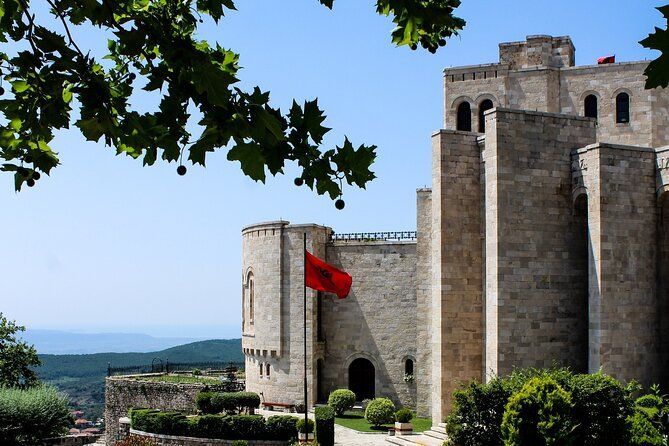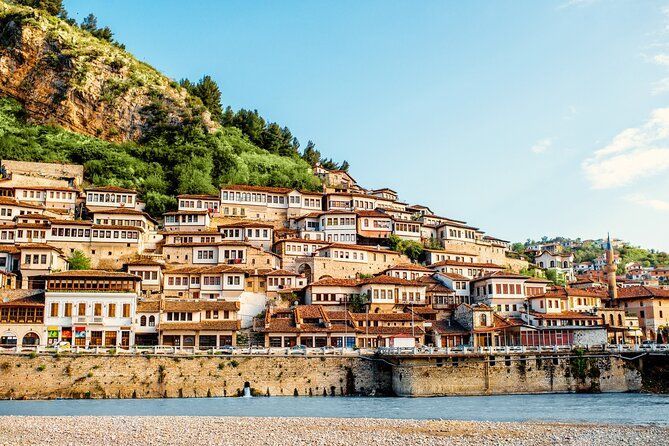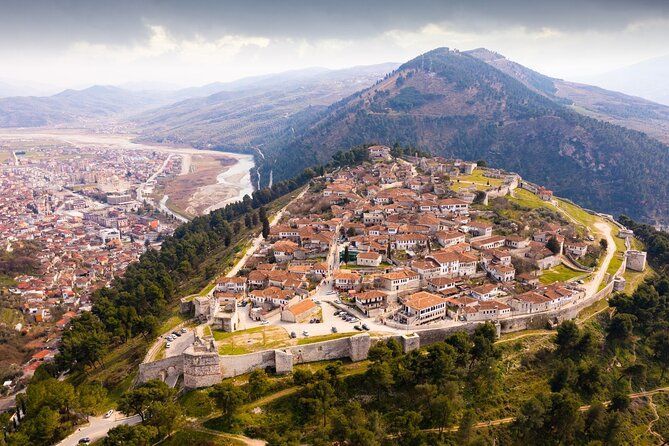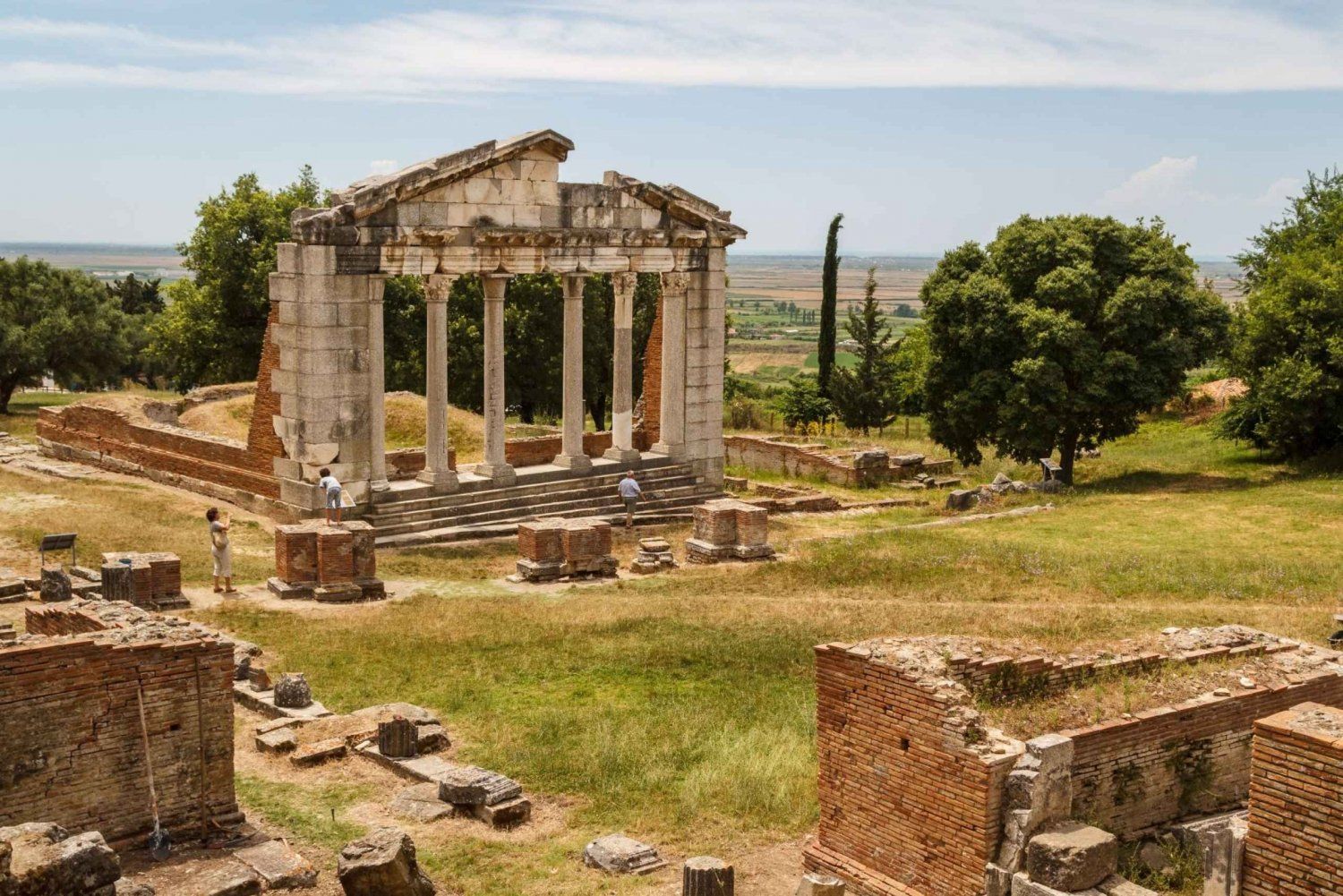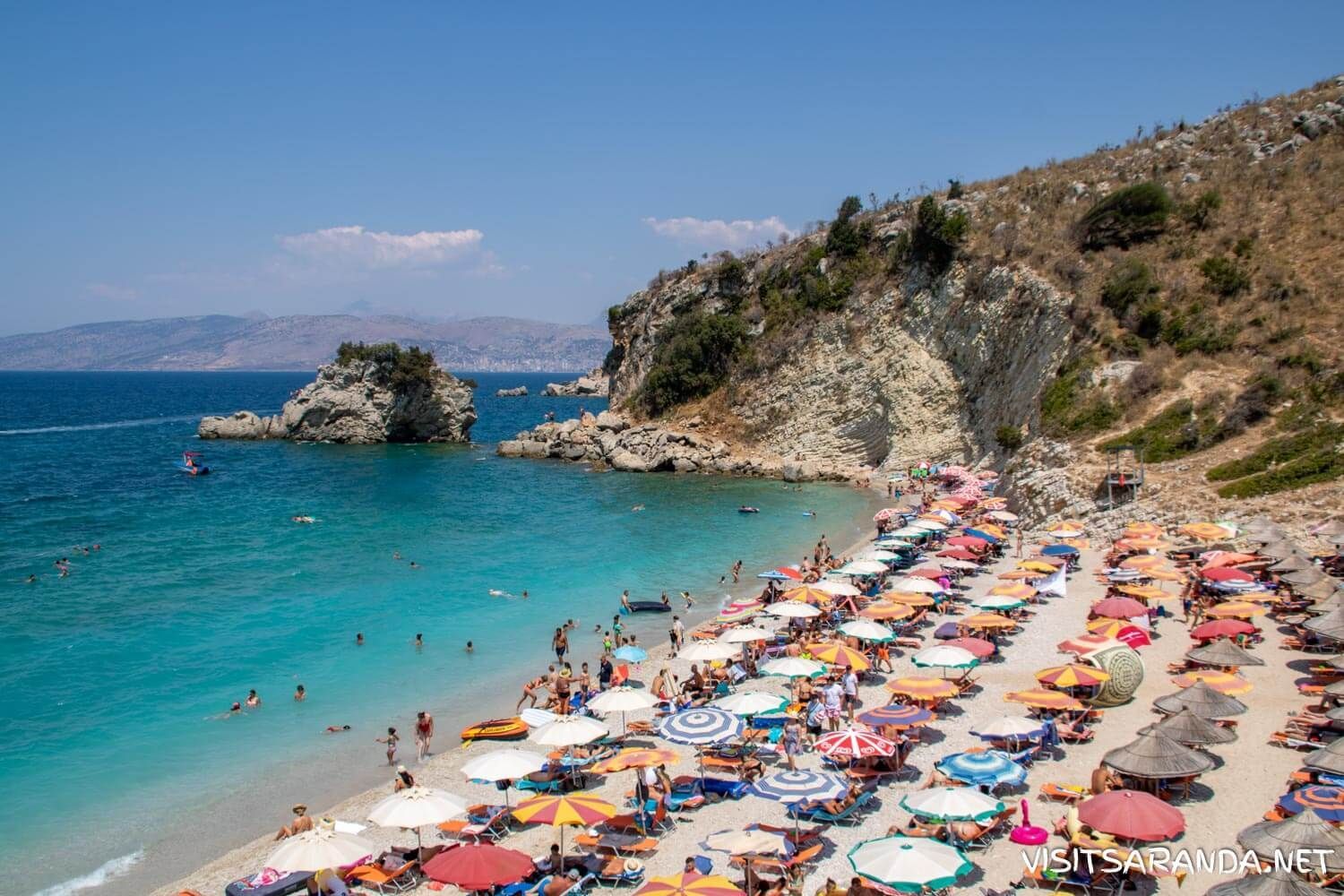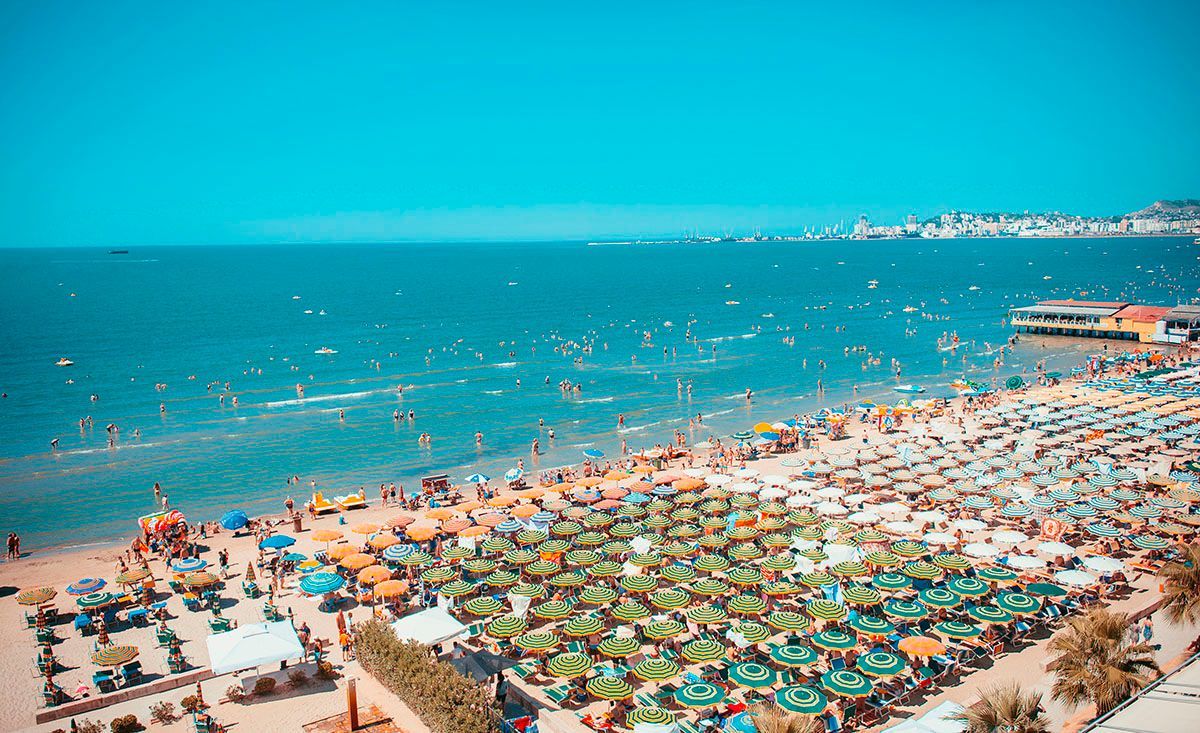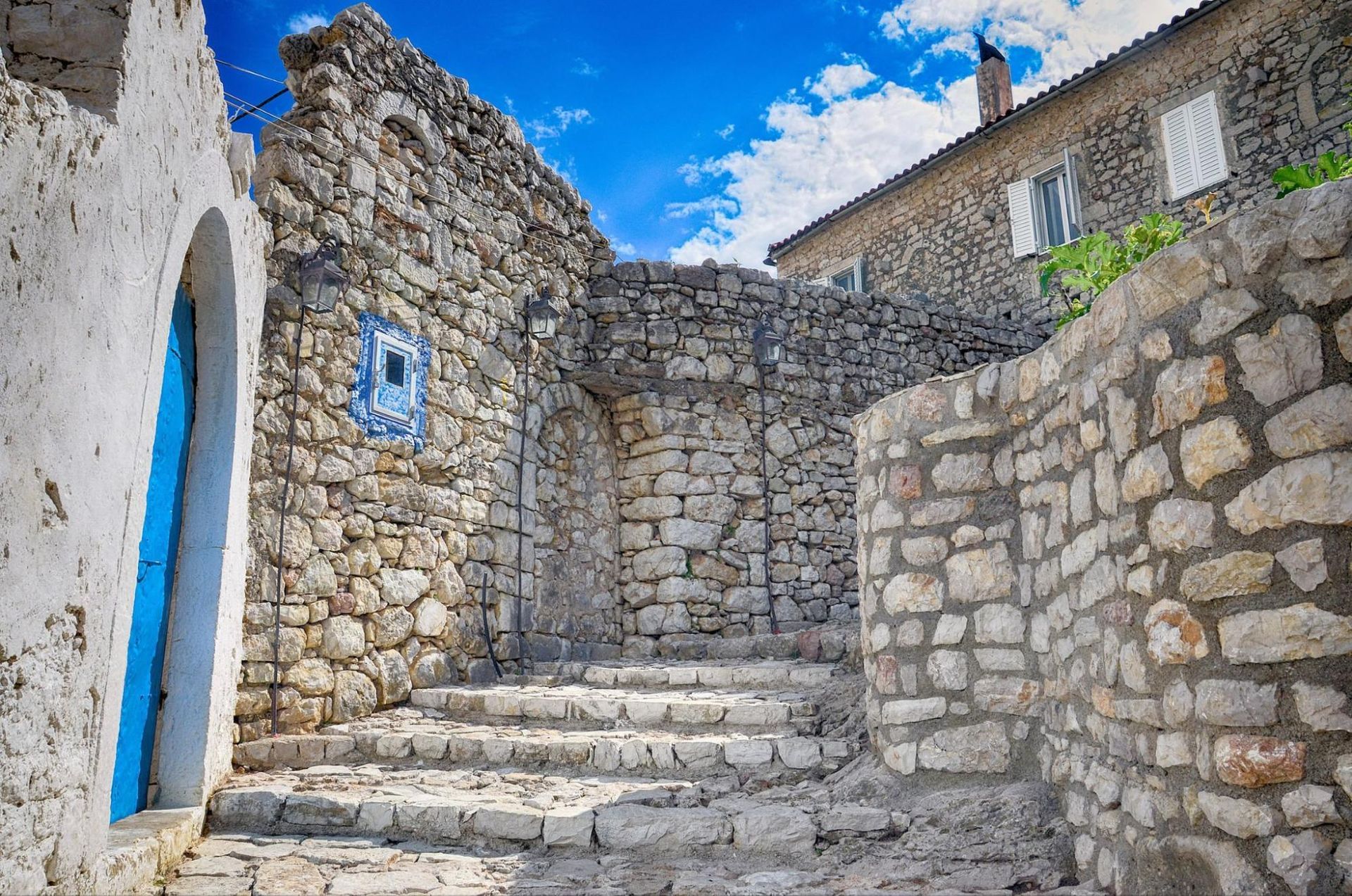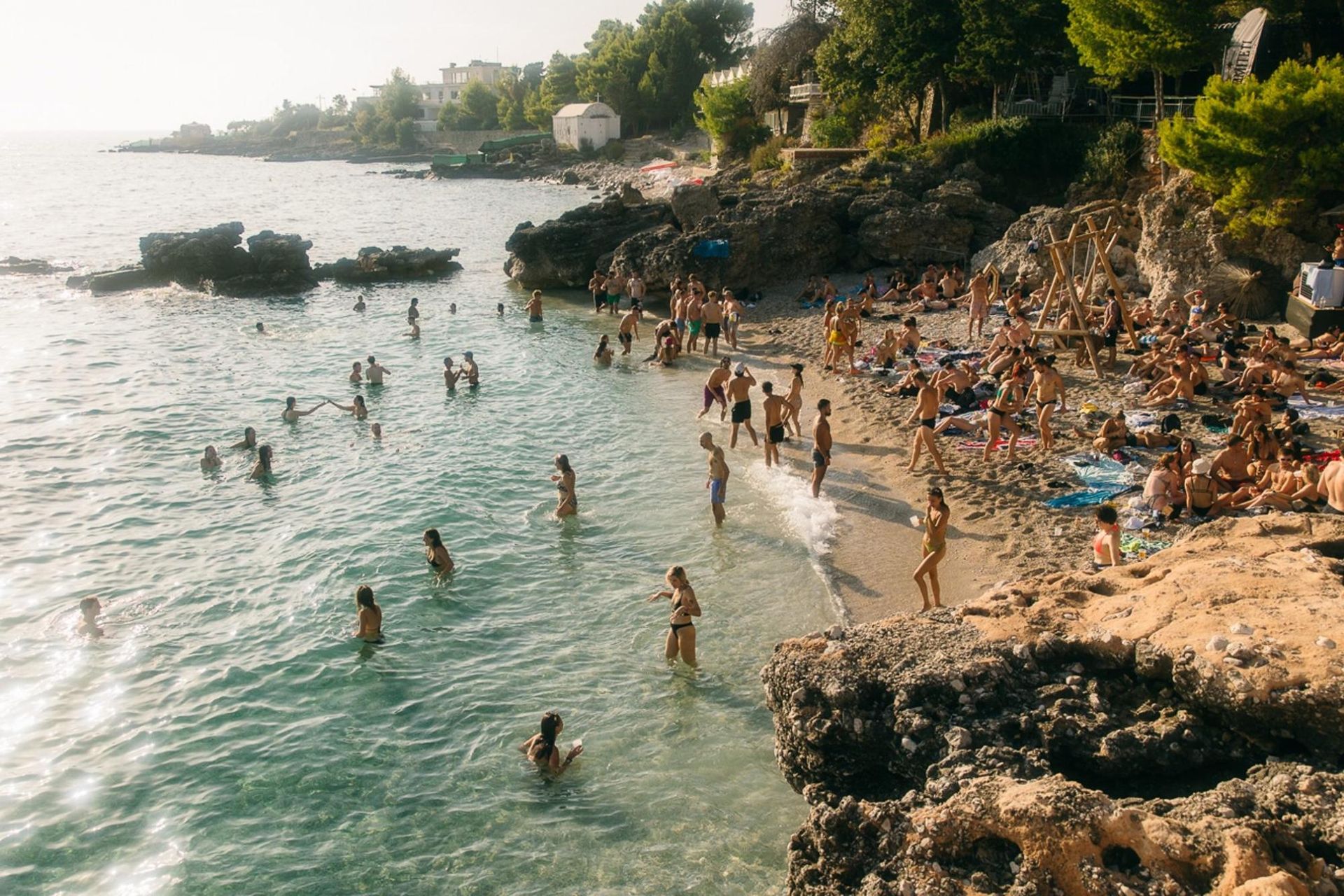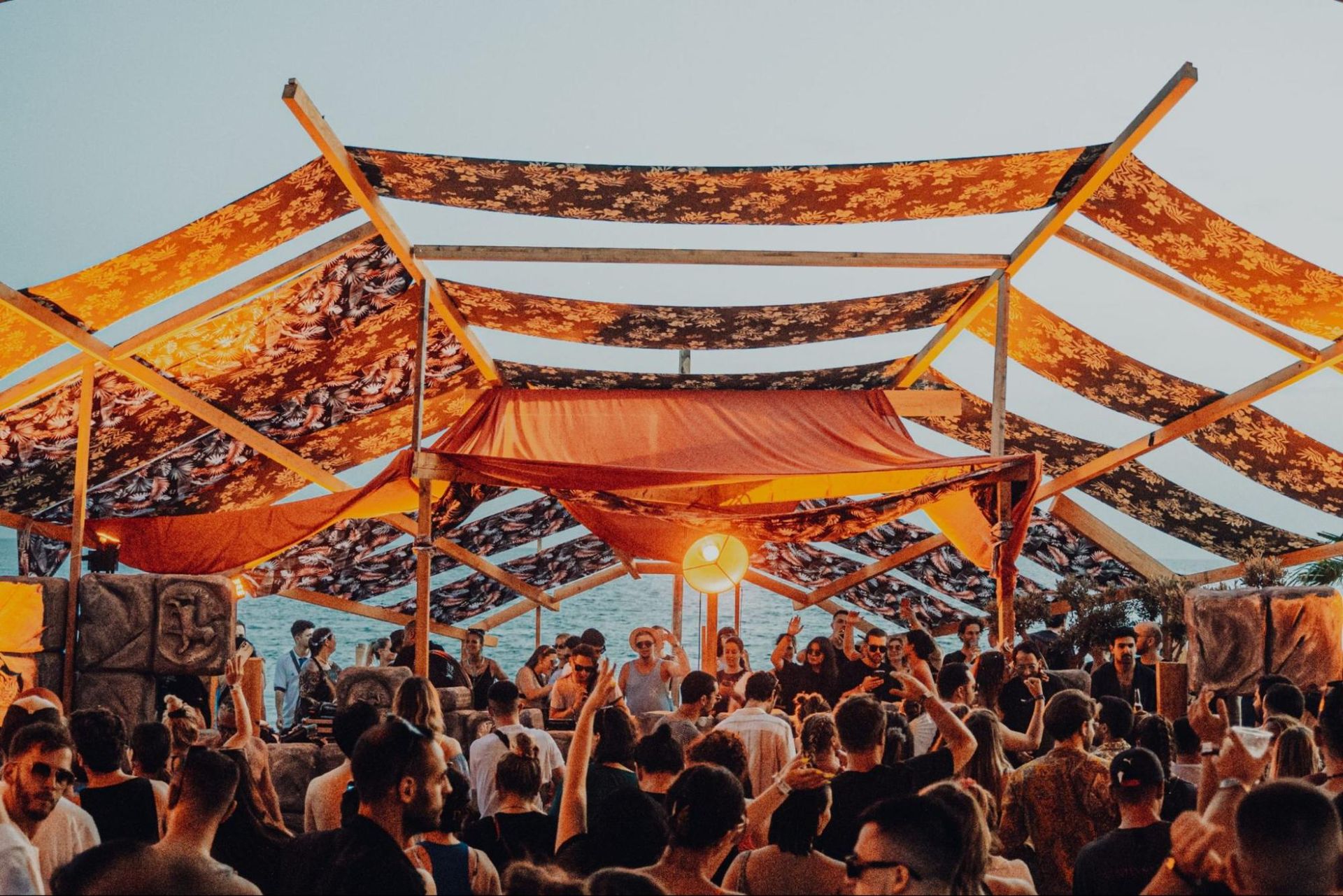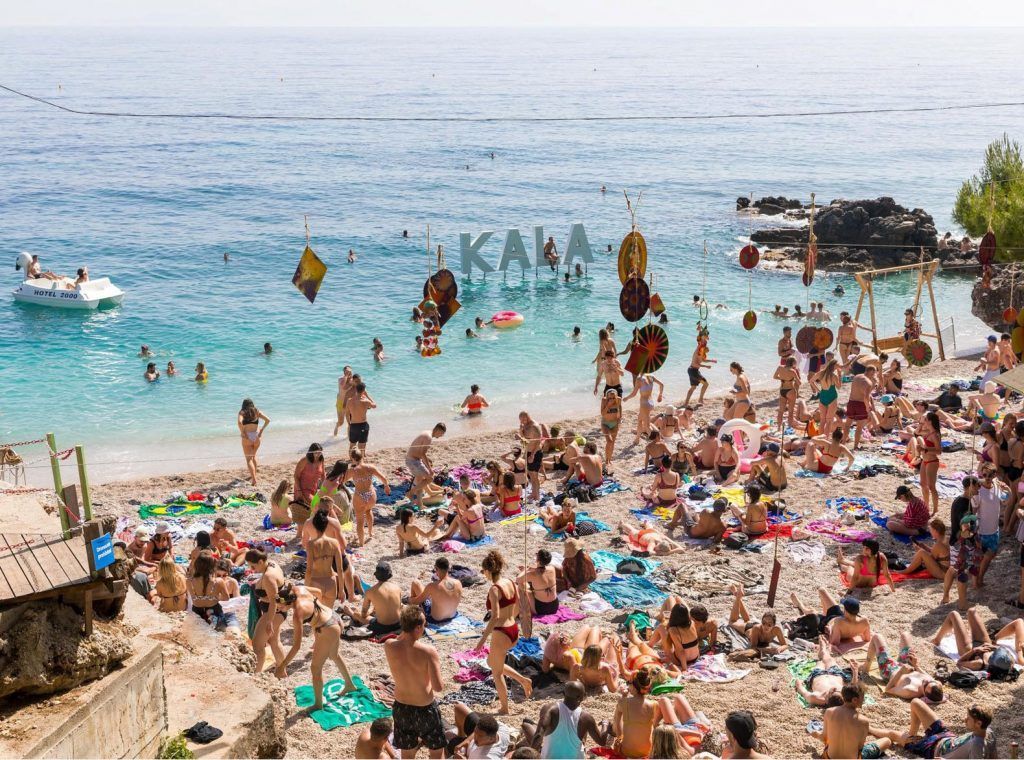15+ Best Tourist Attractions in Albania
Albania is a beautiful country located in southeastern Europe that is becoming more and more popular by the year. The Albanian tourist attractions are the perfect blend of culture, nature, and history, and the country has something to offer to everyone.
Just like the country itself, the
Albanian language is pretty unique, and not all foreigners can get the hang of it. No worries, though; even if you know just a few basics, you’re good to go!
Where is Albania Located?
Albania is located in the Balkans and bordered by Montenegro, Kosovo, North Macedonia, and Greece; thus, it’s home to various cultures and traditions.
The best time to visit Albania depends on the type of vacation that you’re looking for. If you’re interested in a hot summer holiday, the
months of July to August are the peak of the season in the Albanian Riviera, where you can enjoy all the best beaches in Albania.
On the other hand, if you want to
wander around and explore all the attractions that the cities in Albania have to offer, it’s best to visit during the months of November to February or during the spring, from March to late June.
It’s when the cities are not that crowded, and the weather is just perfect.
How to Get to Albania?
15+ Tourist Attractions in Albania
#1. Berat
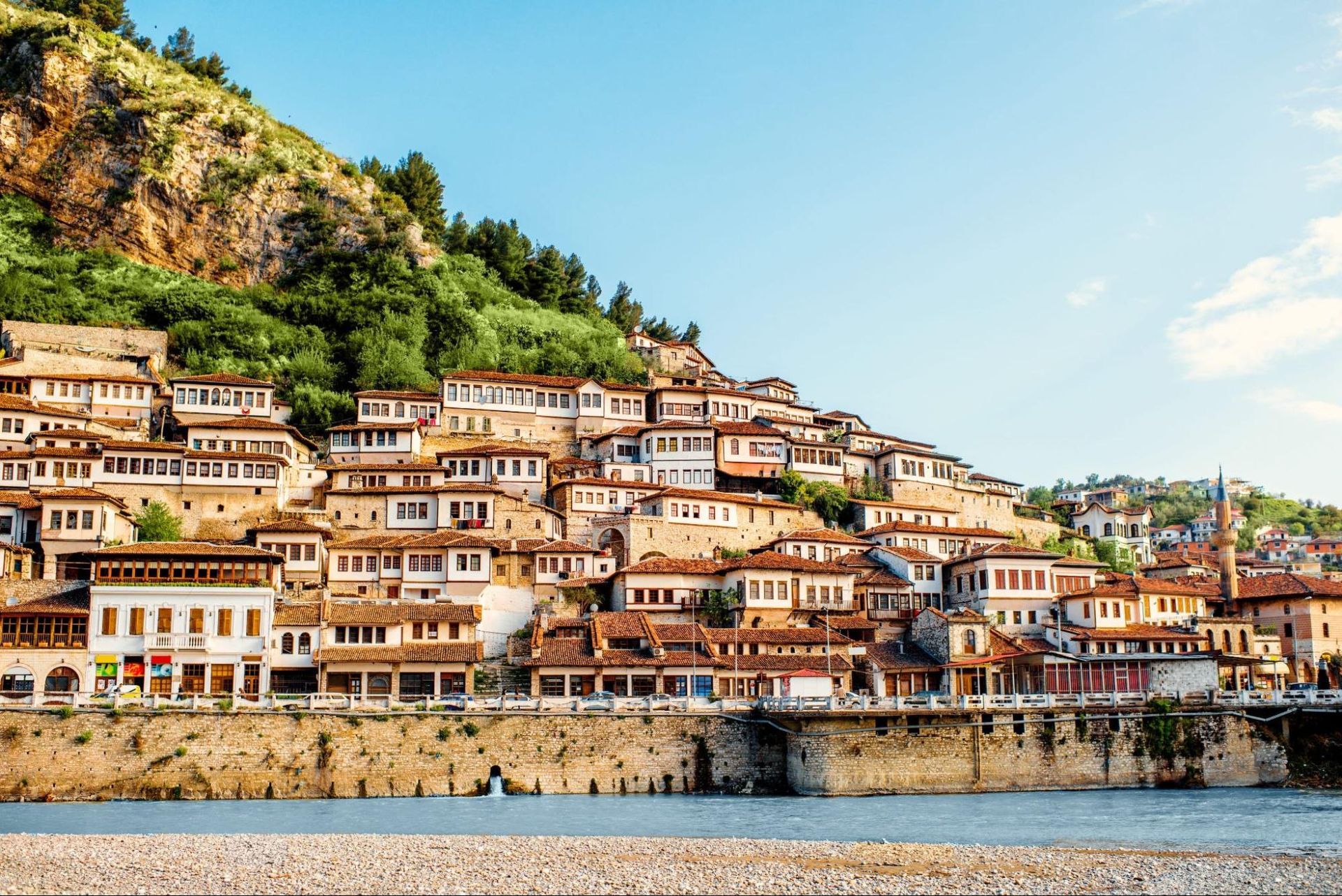
Also known across Albania as “the city of a thousand windows,” Berat is one of the oldest cities in Albania. You can see a blend of Ottoman and Albanian architecture in the buildings, making them very unique. The city is also a UNESCO World Heritage site.
Berat has a lot to offer, from the many historic sites to the fun little cafes and amazing restaurants. It’s a very put-together city, meaning that you can see a lot in just a day. One of the most visited attractions in Berat is definitely Berat Castle,
with its mighty walls standing tall for thousands of years.
#2. Bunk'Art
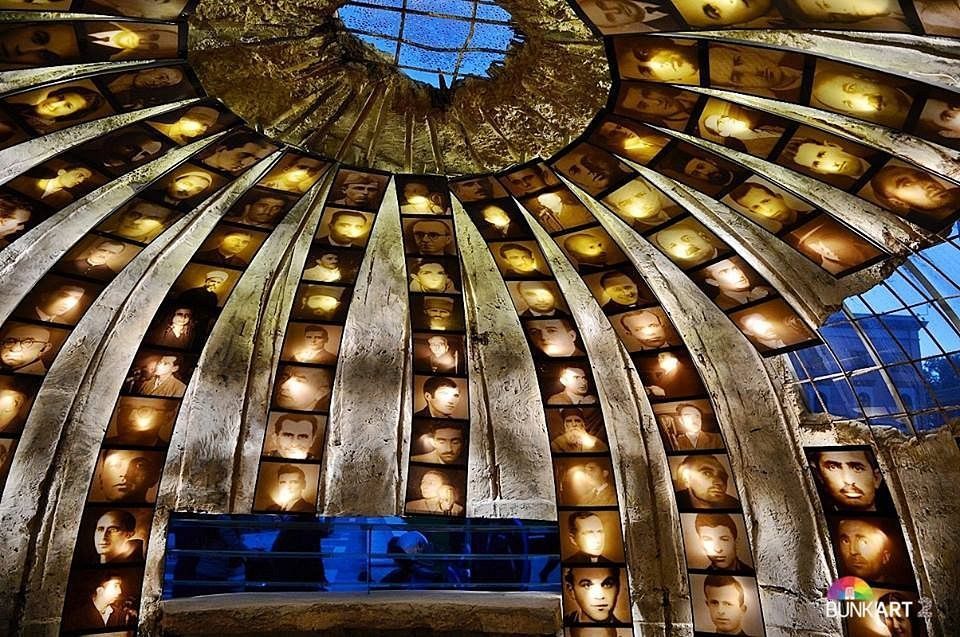
One of the most interesting tourist attractions in Tirana, Bunk’Art, is the perfect place to go if you’re a history buff.
Visiting this unique bunker is an experience not to miss. It’s a five-story structure with long tunnels and different rooms for every period of history. This place takes you back in time and allows you to experience some fragments of Albania’s past.
#3. Albanian Riviera
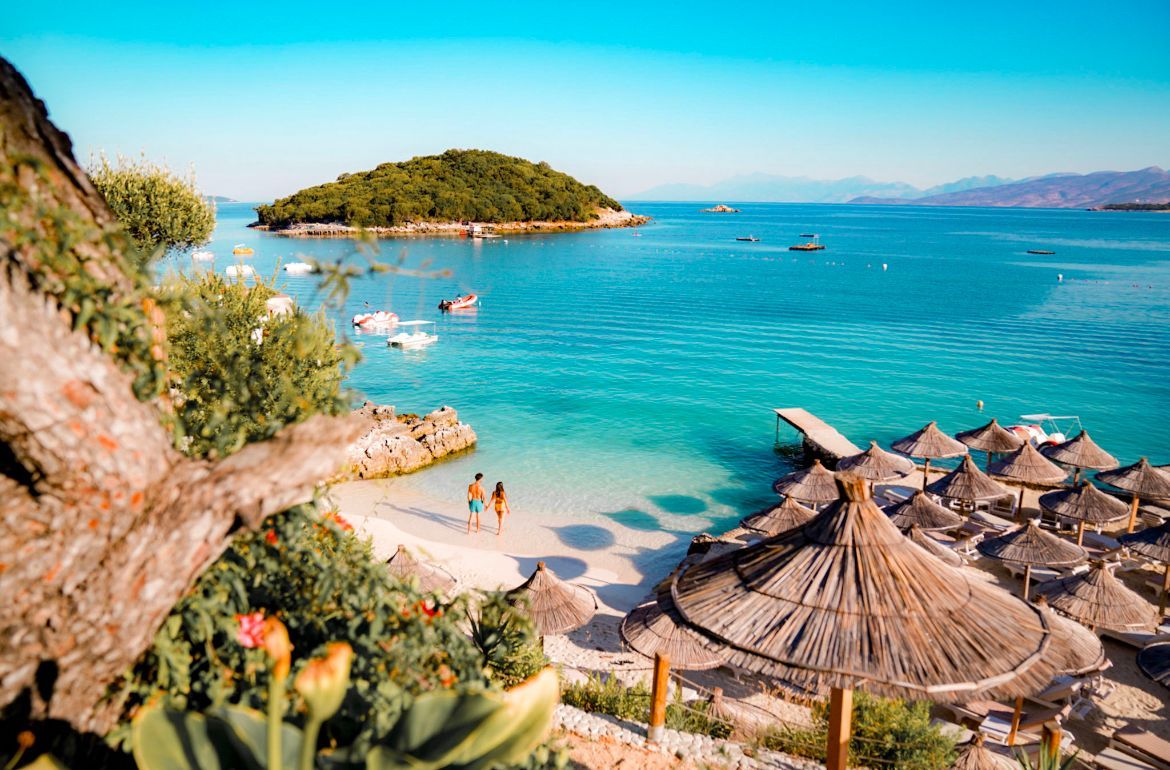
If you’re up for long days at the beach under the hot sun, the Albanian Riviera is the perfect place for your next vacation. It lies along the southwestern coast, and it’s home to some of the best beaches in Albania, from Ksamil Beach to the heavenly Palasë.
During peak season, which is in the months of
July and August, the whole area is packed with tourists, and the
prices might get a bit higher. Most tourists choose destinations such as
Ksamil or Dhermi for their vacation, which are some of the most beautiful places in Albania in summer.
#4. Gjirokastra Castle
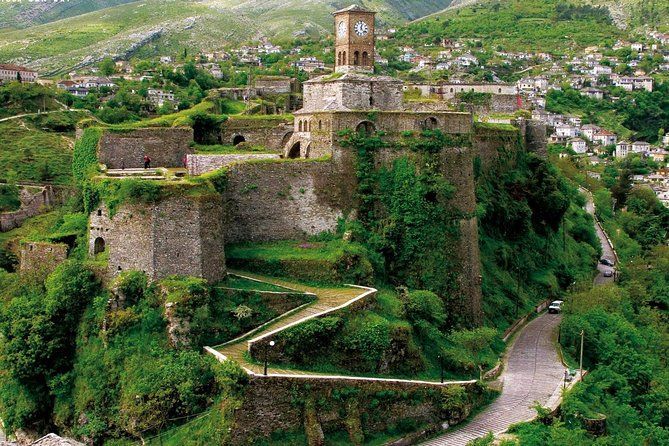
Standing proud and tall on a hill overlooking the city, Gjirokastra Castle is the second-largest monument in the Balkan region. You cannot miss this attraction if you’re visiting the beautiful town of Gjirokastra, which is also a UNESCO World Heritage Site.
The castle is said to be built around the 12th century, and it used to serve the function of a
prison during the years of communism. Nowadays, it has turned into a very impressive museum, with much to see, like the
Bektashi Tomb, the
Artillery Gallery, or the
Clock Tower.
The views from the viewpoints of the castle are absolutely amazing, with the stunning valleys and mountains standing in front of you.
#5. The Blue Eye
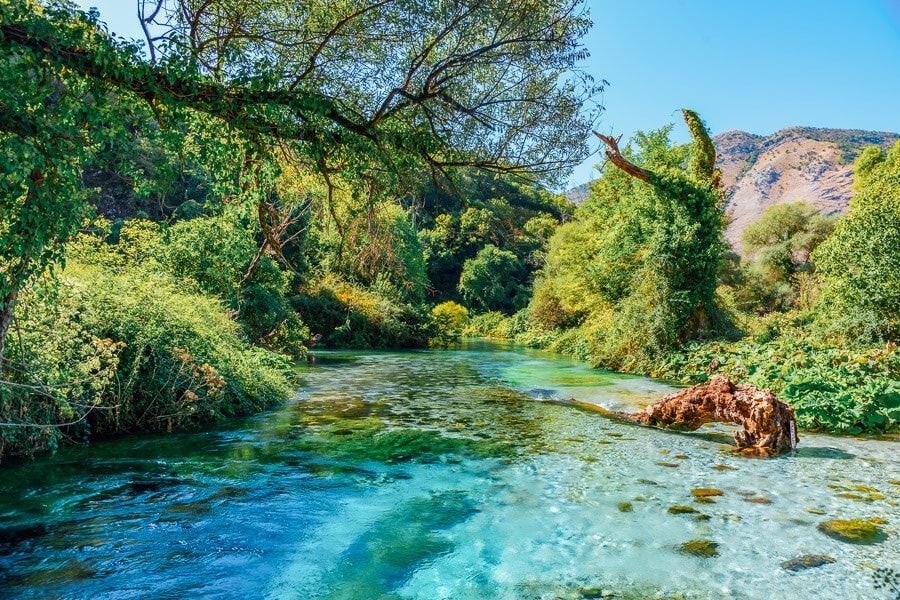
Next on our list is the amazing Blue Eye in Saranda. It’s one of the top Albania tourist attractions in the summertime as it’s the perfect place to freshen up. The Blue Eye, Albania, is a totally natural cold-water spring, at least 50 meters deep.
You can get there by bus from the city of Saranda, and
you have to pay €0.5 to see the Blue Eye. The area is open
from 8 a.m. to 8 p.m. every day, but make sure to get there in the morning hours, as it gets pretty crowded later.
#6. Dardha

Picture a cozy, warm corner near the fire during a cold winter day, sipping some hot cocoa and reading your favorite book. That’s Dardha during the winter—a magical place waiting to be visited.
Dardha is a
small yet very panoramic village near the city of Korca. It’s a perfect destination for
skiing or
hiking in Albania, contributing to the growth of Albania tourism in the winter. There are many ski
slopes perfect for beginners and professionals, and you can find the necessary equipment at the ski center.
Dardhe means “pear” in Albanian, and the town got this name because of an old legend. According to it, when the first inhabitants of the village were asked where they were, they said “at the place under the pear tree,” referring to a big pear tree in the area.
#7. Durrës Amphitheatre
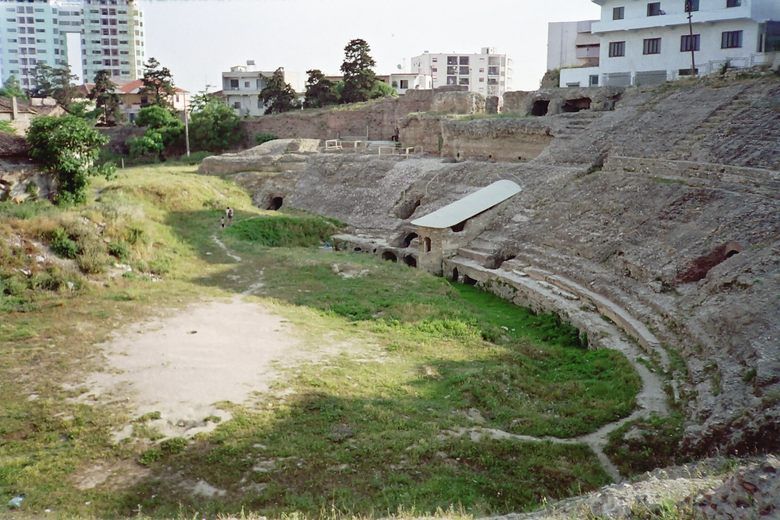
Durrës, one of the oldest cities in Albania, holds major historical and cultural significance. A great example of this is the Durrës Amphitheatre, built in the 2nd century BC. To this day, it’s one of the most beautiful Roman amphitheaters, and it was discovered only in 1966 by archaeologist Vangjel Toci.
The central arena is surrounded by several staircases that could hold up to 20,000 spectators. You can even visit the
tunnels below the amphitheater, where you can see frescoes and decorations.
If you want to see the Durrës Amphitheatre, you can do so every day
from 9 a.m. to 6 p.m., with a ticket costing
€3.
#8. Valbona National Park
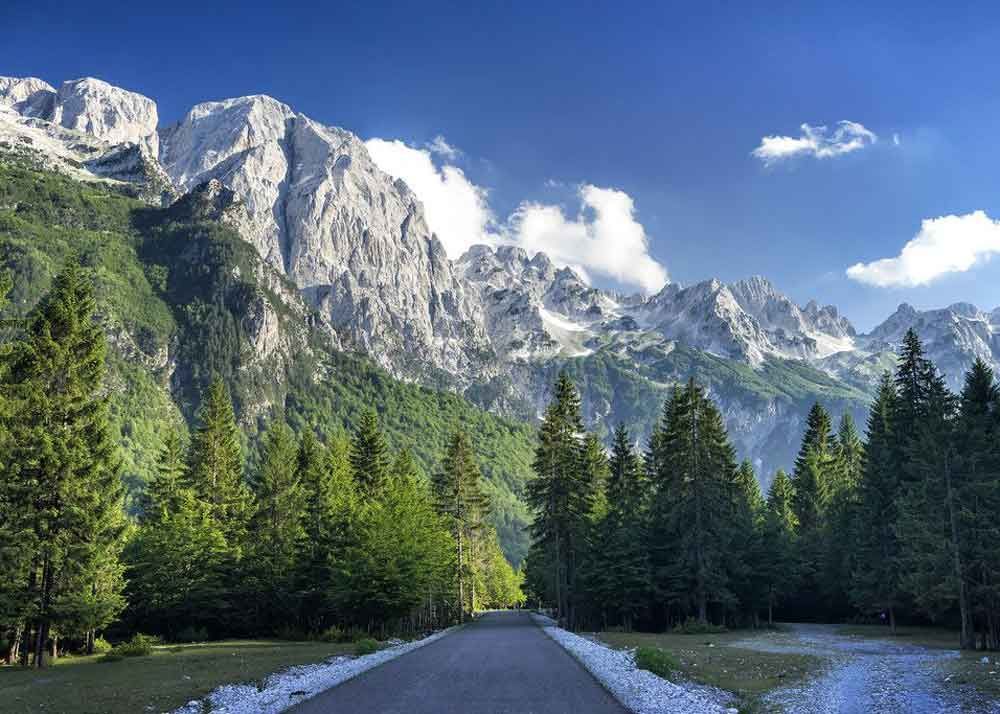
Surrounded by mountains and amazing greenery, Valbona National Park is a nature lover’s paradise. The Park is situated in Tropoja, in the north of Albania. It is named Valbona thanks to the Valbona River flowing through the valley.
The river is almost 50 kilometers long and has one of the fastest currents in Albania.
There are a lot of
guesthouses around the area that you can stay at that offer
delicious meals made with fresh and natural ingredients. Many hikers use Valbona Valley as their starting point for their hikes to the other surrounding mountains, as there are some amazing scenic trails
along the way.
#9. Skanderbeg Square

Skanderbeg Square is the epicenter of Tirana, with some of the most important buildings in Albania surrounding it, like the Palace of Culture, the Bank of Albania, and the Tirana City Hall. The Square links together many parts of the city, and on a usual day wandering around Tirana, you’re sure to pass by.
The whole Square is paved with
materials coming from every city in Albania, representing the unity and harmony of the country.
If you’re visiting Tirana during the winter holidays, you’re in luck.
Skanderbeg Square is the top destination for tourists every winter evening, as it gets beautifully decorated with lights, carnival games, and an amazing Christmas tree.
#10. National History Museum
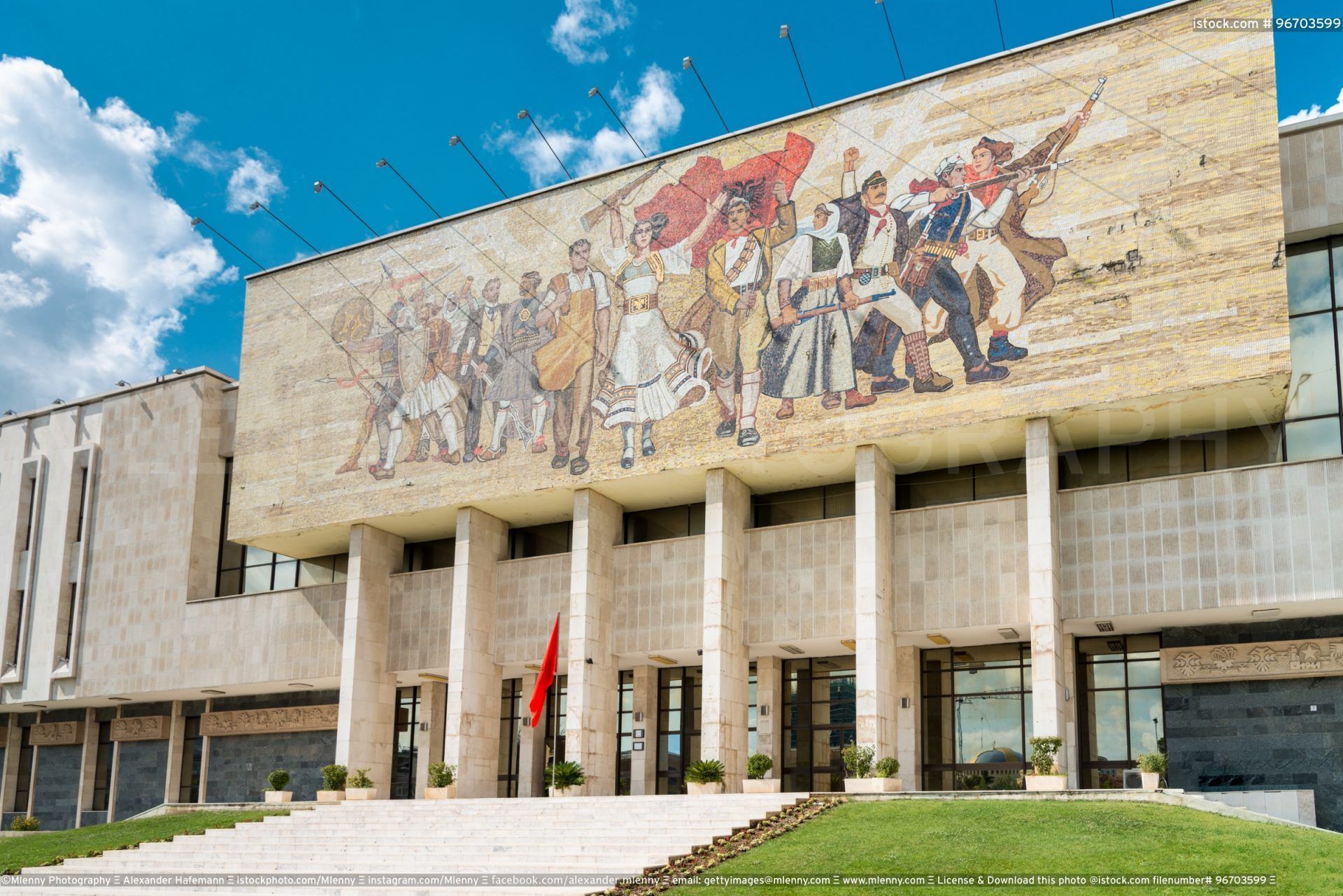
The most important museum in Albania, the National History Museum, was opened in 1981. Since then, the museum’s only goal has been to emphasize and provide thorough knowledge about Albania’s history to the public.
There is a total of
6,200 objects for exhibition on the premises, belonging to different periods of time. The museum is located in Skanderbeg Square, right in the heart of the city, so it’s pretty hard to miss while wandering around.
It’s open
every day until 7 p.m., and a ticket costs about
€5.
#11. Kruja Castle
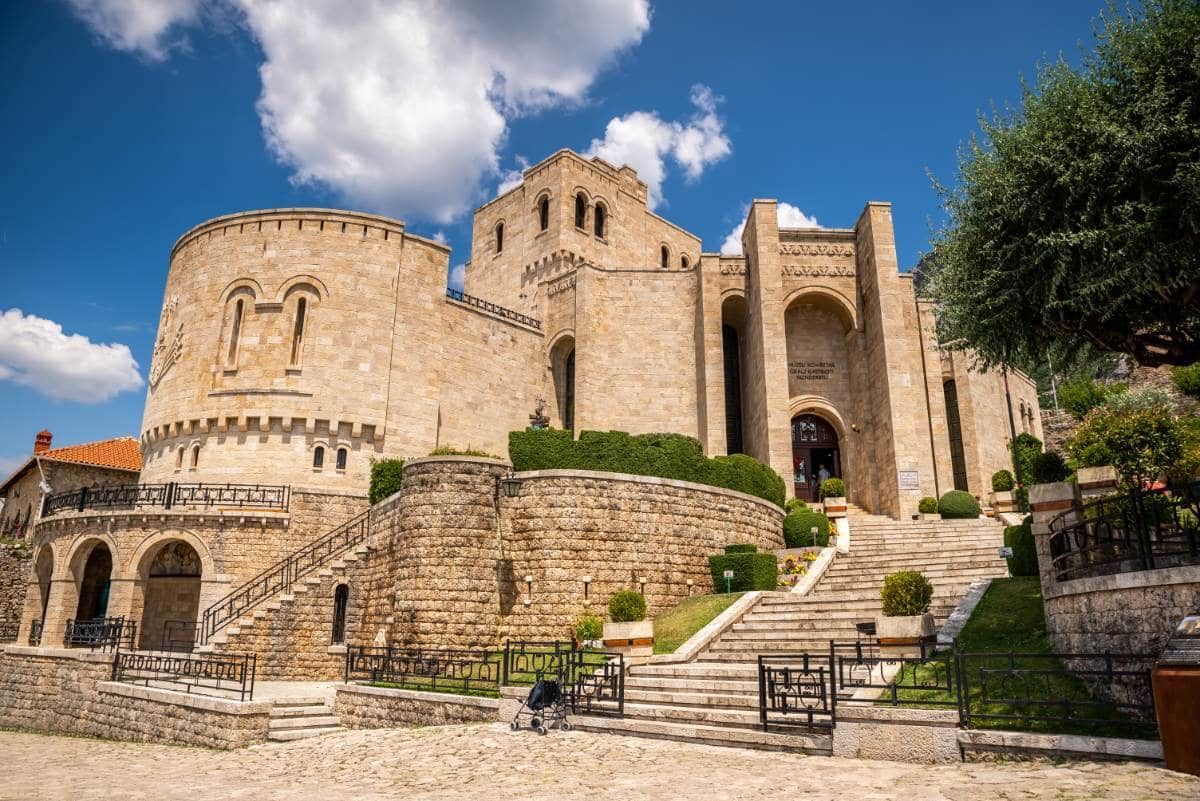
Standing proud on a cliff above the town, Kruja Castle is one of the biggest monuments in the country. It’s the perfect example of Albanian perseverance and strength, even during the country’s darkest times.
Even when the Ottoman forces ruled most of Europe, the castle managed to remain free, thanks to the National Hero of Albania,
Gjergj Katriot Skanderbeg, who was born in Kruja. Only after Skanderbeg’s death did the castle fall into the reign of the Ottoman Empire.
Inside the castle, you can visit the
National Museum of Skanderbeg, featuring exhibits about the hero’s life, from his achievements to his personal life.
#12. Butrint National Park
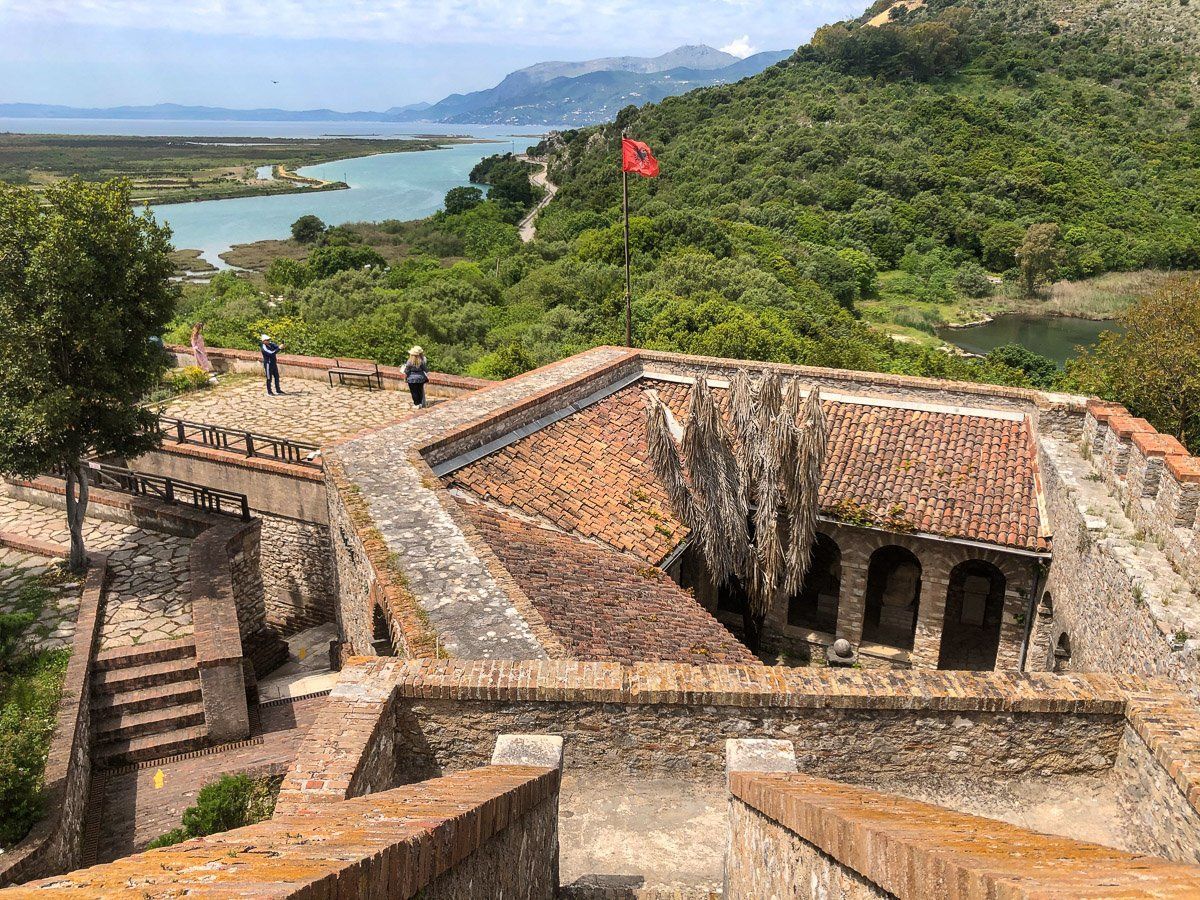
If you’re a history buff, then visiting Butrint National Park should be at the top of your list. It’s amongst the most important historic sites in the country while also being a UNESCO World Heritage Site. The park is located in south Albania—in the Vlora County.
Archaeologists say that what has been discovered until now is
only 15% of what lies underground. So far, they have managed to excavate a Roman Theater, a Roman Forum, a temple, and Roman Baths, which were some of the most important structures in the Roman civilization used for socializing, bathing, and relaxing.
The entrance fee is about
€9, and the park is open
every day until 7 p.m.
#13. Cyclops Eye
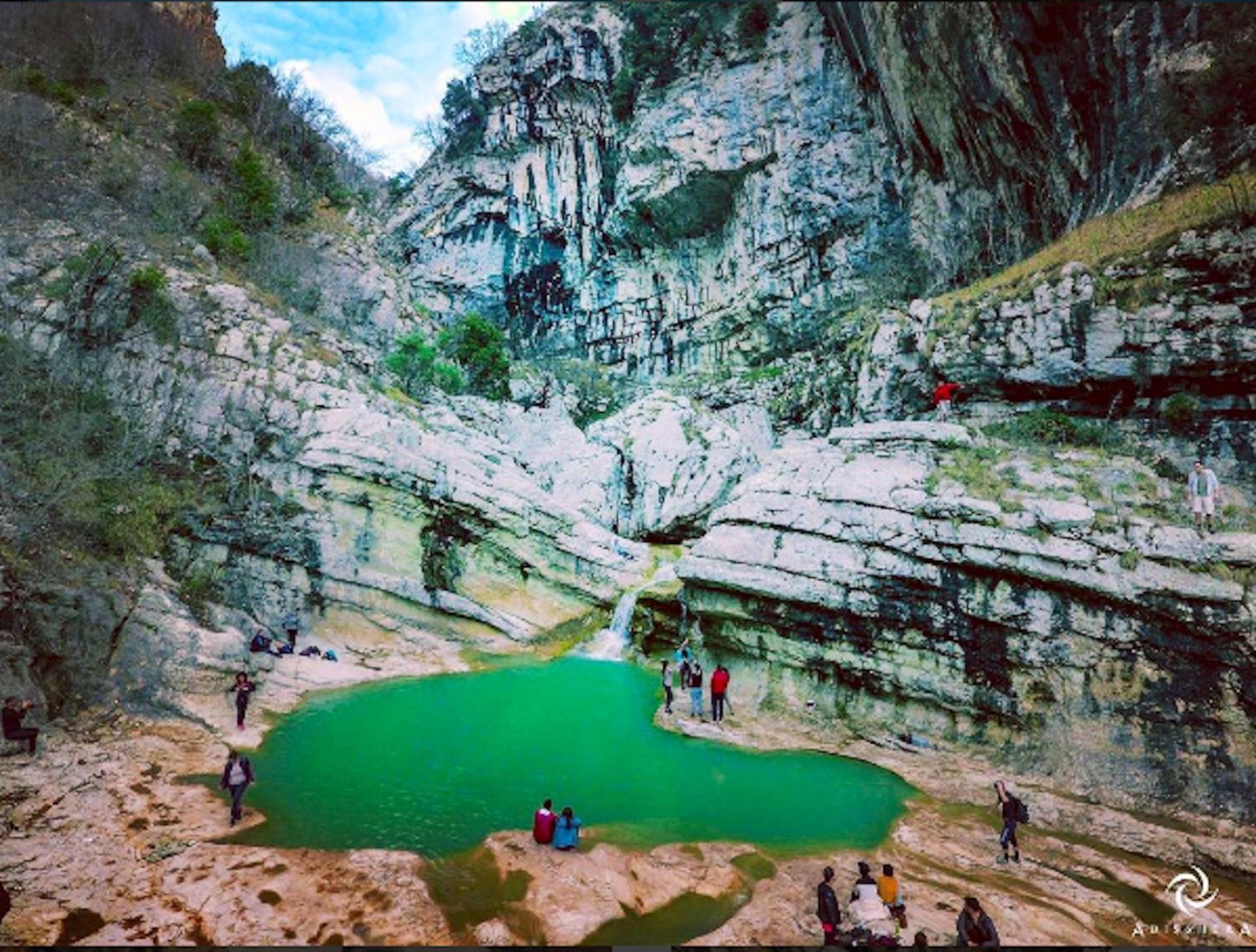
Cyclops Eye is nestled between the rocks in the village of Krrabe just outside Tirana. This natural spring is about five meters deep and a perfect place to freshen up after a hot day.
Getting to Cyclops Eye
requires some walking, starting from Krrabe. It’s a bit of a challenging terrain, but the destination is absolutely worth it. Hundreds of tourists visit this attraction each year, enjoying every moment of the
adventurous journey it takes to get there.
#14. Lake Koman
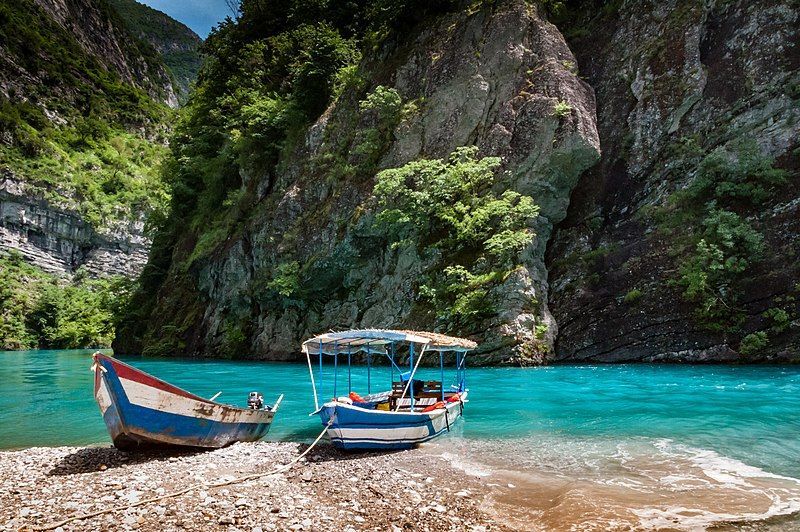
Lake Koman is situated in the north part of the country, near the Valbona National Park. This is an artificial lake created in the 1980s when the power station was built on the Drin River.
Even though it’s
an artificial lake, it’s still one of the most beautiful landscapes in Albania, surrounded by wild and beautiful nature. You can take
ferry rides for the most amazing views.
#15. Llogara Pass
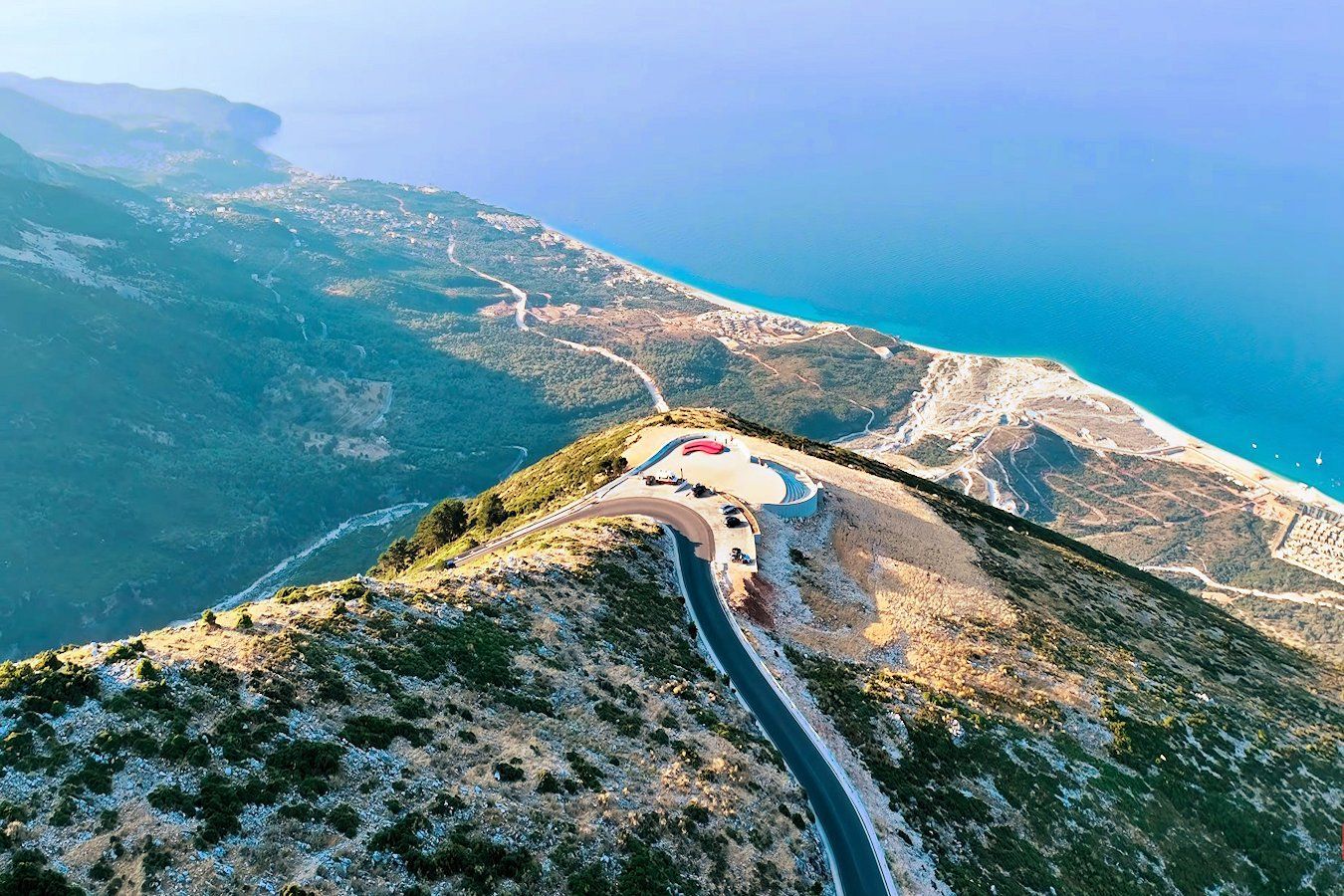
If you’re driving to the Albanian Riviera, you’ll pass through Llogara Pass, one of the most impressive roads in the country. It’s the highest peak of the road from Vlora to Saranda, and the views are just breathtaking.
Many tourists make a stop when they reach Llogara Pass to admire and soak up the
stunning landscape in front of them. South of the Llogara Pass, you can find the Palasë Beach, which is used by many as a parachuting landing area.
Tips for Visiting Albania
Here are some helpful tips you should keep in mind when you visit Albania:
- Safety. Albania is generally considered a safe country for tourists. Nevertheless, you should take the usual precautions, like keeping a close eye on your belongings and avoiding dark areas alone at night.
- Cash Vs. Card. Most places in Albania take payments in cash, like big restaurants, hotels, and some supermarkets. However, it’s good if you keep some cash on you all the time. The currency in Albania is the Albanian Lek, but some businesses also take the Euro.
- Weather. The climate in Albania is Mediterranean, so pack depending on when you’re visiting. If you’re visiting during the summer, pack light clothing, but also take some jackets with you, as the evenings can get chilly.
- Transportation. The main cities, like Tirana, Durrës, or Elbasan, have public transport, but it’s not always the best choice, especially in the summer, when the buses are hot and too crowded. If you’re planning on staying for a while, renting a car would be a good option.
Travel with Kalemi Around Albania
#1. Tirana Walking Tour
The Tirana Walking Tour is a must-do while visiting the capital, as it provides you an in-depth look at the city, with countless places to see. You’ll meet with your guide in Skanderbeg Square, and from there you’ll visit Et’hem Bey Mosque, the Clock Tower, and The New Bazaar, where you’ll get to spend time like a real local.
Next you’ll visit the castle of Tirana, which has turned into a nice outdoor complex, with lots of bars, restaurants, and shops. Of course, you can’t do a Tirana Walking Tour without visiting Blloku, the most famous neighbourhood in the city, which was previously an exclusive neighbourhood for the leaders of the communist regime.
#2. Multi-Day UNESCO Tour in Albania
This 4-day tour is sure to be loved by every history buff out there, exploring various culturally and historically significant towns, like Gjirokastra, Berat, and Butrint. In Gjirokastra, our first UNESCO town, you’ll get to visit the Old Bazaar, as well as Zekate House, one of the best representations of the tower-houses of Gjirokastra.
Your next stop will be Butrint and the beautiful Blue Eye, one of the most wonderful places you’ll ever get to visit. Moving on to the second UNESCO site, Butrint National Park, one of the most important archaeological site sin the country.
Next you’ll visit the historical town of Berat, which is also the third UNESCO site of this tour. You can see the castle of Berat, one of the oldest castles in Albania, as well as the Byzantine Churches and Ottoman mosques.
#3. Full-Day Tour, Durres and Kruja: A Historical Getaway From Tirana
This tour will take you back to the medieval times of Albania, letting you explore the beautiful towns of Kruja and Durres. The journey starts in Tirana, from where you’ll get to Kruja, to visit Kruja Castle. It’s known for being the base of Skanderbeg during the war against the Ottomans.
Next you’ll visit the Gjergj Kastrioti Museum, where you’ll learn all about the National Hero’s history and how he became so significant. Durres is the last stop, with its big amphitheatre and the Venetian Tower, both very popular tourist attractions.
#4. Full-Day Tour From Tirana to Gjirokaster, Blue Eye and Saranda
If you’re looking for a tour that combines history, culture, and a little seaside adventure, this is the one for you! The first stop of the trip is Saranda, which offers a picturesque ride along the Riviera. Next you’ll get to visit the freshwater spring of the Blue Eye, one of the most magical natural phenomena in Albania.
The final stop is the welcoming town of Gjirokastra, where you can visit the Old Bazaar, Gjirokastra Castle, and the house-museums along the cobblestone streets. Gjirokastra is one of the best preserved medieval cities, also being a UNESCO World Heritage Site.
#5. Kruja Day Tour From Tirana
The city that represents Albanian pride and strength, Kruja is the center of this tour. First you’ll walk through the Kruja Bazaar, in the narrow cobblestone streets and the old houses, dating back to the Ottoman Empire.
Then you’ll visit Kruja Castle, where the Museum of Skanderbeg is also located. The castle walls are known for isolating the Ottomans and protecting the country, until Skanderbegs last breath. The museum perfectly showcases the National Hero’s role and significance in Albania’s history, with different documents and artifacts.
#6. Berat Full-Day Tour From Tirana
Your ticket to the times of antiquity, the city of Berat is a perfectly-preserved Ottoman city, highly visited by tourists. This full-day tour will take you to all the city highlights, like the National Iconographic Museum, Berat Castle, and Gorica Bridge.
The entry fees are all included in the tour, along with the guide proving as much information about each sight as possible. Berat is a city full of interesting history and culture, and you are sure to be left speechless by the amazing Ottoman-architecture houses still standing tall.


